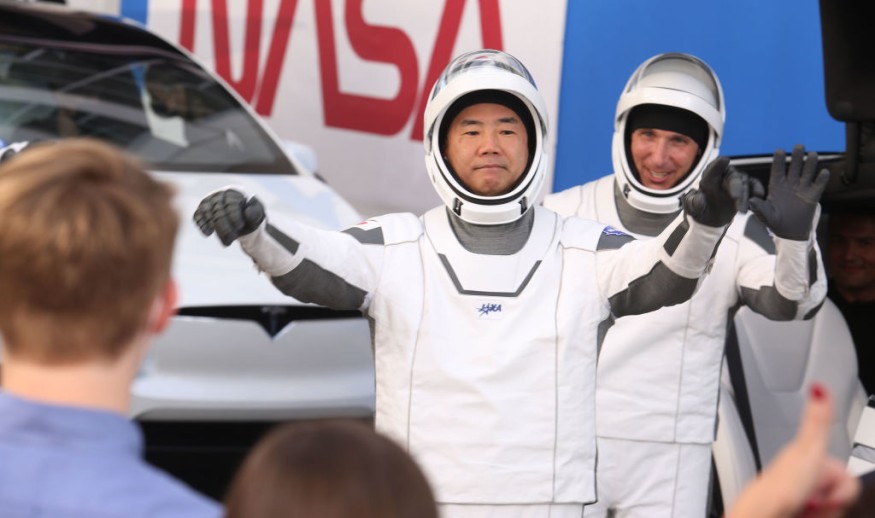On Saturday, a Japanese astronaut passed over a mission sash to a fellow countryman who landed on the International Space Station with three other astronauts aboard a SpaceX spacecraft (ISS).
Soichi Noguchi of Japan handed over the sash to Akihiko Hoshide, who had previously stayed on the International Space Station.

According to The Mainichi, sashes are exchanged between runners in Japanese "ekiden" relay races similar to a baton.
"I'm really glad we could do a sash relay between Japanese people," Noguchi said.
Hoshide, who arrived at the space station on SpaceX's new space capsule Crew Dragon on Apr. 24, shared his excitement for the mission as he got the sash. He said that he would like to conduct experiments and studies for humanity's sake to visit the Moon and Mars in the future.
About the Japanese Astronomers
Space.com said Soichi Noguchi works for the Japan Aerospace Exploration Agency as an astronaut and engineer.
In July 2005, he flew to the International Space Station on Discovery's STS-114 spacecraft, the first space shuttle flight since the Columbia disaster in 2003. In December 2009, he returned to the ISS aboard a Soyuz spacecraft.
He was a mission specialist on SpaceX's Crew Dragon's Crew-1 flight, which launched on Nov. 15, 2020, on his third mission to space. The historic journey was the first commercial crewed spacecraft to reach the International Space Station.
He is also one of only three people to have traveled into space on three separate spacecraft: NASA's space shuttle, the Soyuz spacecraft, and the Crew Dragon spacecraft. He is the first astronaut from a country other than the United States to do so.
Noguchi would spend nearly six months in orbit as part of Expedition 64, adding to his previous 177 days in space.
Another Space.com report said Hoshide joined JAXA (formerly known as Japan's National Space Development Agency) in 1992. He served as a director of the Nagoya Office for two years, where he was involved in constructing the H-II launch vehicle. He worked with the NASDA Astronaut Office as an astronaut service engineer from 1994 to 1999, assisting with implementing the astronaut training program and the review of crew interface designs. He also aided astronaut Koichi Wakata during his STS-72 preparation and flight.
JAXA chose Hoshide as one of three Japanese astronaut candidates for the International Space Station in February 1999. In April 1999, he began the ISS Astronaut Basic Training program and was qualified as an astronaut in January 2001. He has been a part of ISS Advanced Training since April 2001, as well as promoting the hardware construction and operation of the Japanese Experiment Module Kibo and the H-IIA Transfer Vehicle (HTV).
He finished Soyuz- TMA Flight Engineer-1 training at the Yuri Gagarin Cosmonaut Training Center (GCTC) in Star City, Russia, in May 2004.
About the Mission
With SpaceX's third crew capsule launch in less than a year, carrying four astronauts, including Hoshide, the International Space Station's population grew to 11 on Saturday.
The astronauts come from the United States of America, Russia, Japan, and France.
The capsule was launched from NASA's Kennedy Space Center and arrived a day later.
The newcomers will stay at the space station for six months.
They'll take the place of four astronauts who will go back to Earth in their own Dragon capsule on Wednesday, bringing their six-month journey to a close.
NASA purposefully scheduled a brief overlap so that the departing SpaceX crew could show the newcomers around.
Six Americans, two Russians, two Japanese, and one French person make up the new population.
On Wednesday, three Americans and Noguchi will depart for home and a splashdown in the Gulf of Mexico, reducing the group by four.
Check out more news and information on Space on Science Times.











